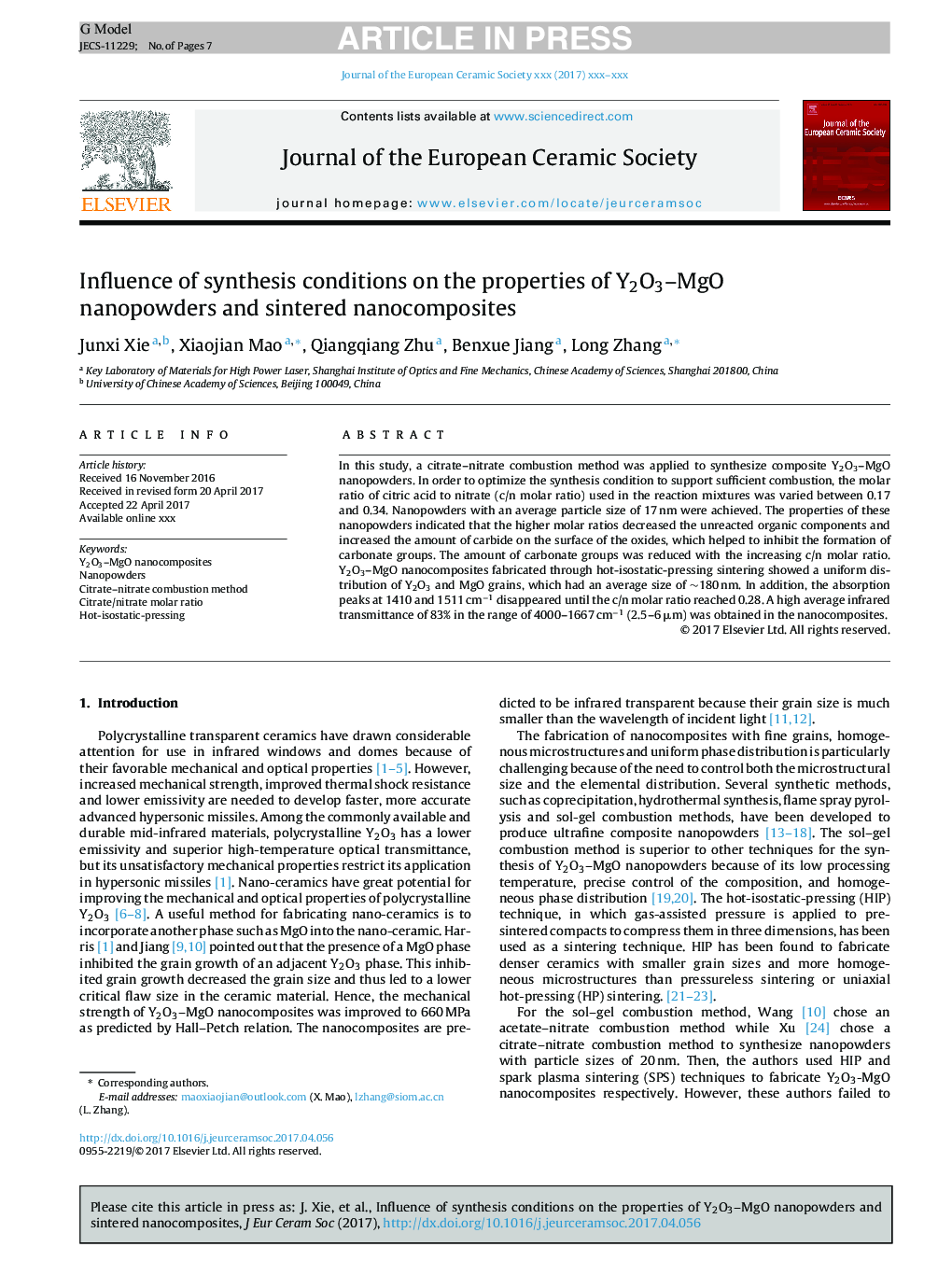| Article ID | Journal | Published Year | Pages | File Type |
|---|---|---|---|---|
| 5440444 | Journal of the European Ceramic Society | 2017 | 7 Pages |
Abstract
In this study, a citrate-nitrate combustion method was applied to synthesize composite Y2O3-MgO nanopowders. In order to optimize the synthesis condition to support sufficient combustion, the molar ratio of citric acid to nitrate (c/n molar ratio) used in the reaction mixtures was varied between 0.17 and 0.34. Nanopowders with an average particle size of 17 nm were achieved. The properties of these nanopowders indicated that the higher molar ratios decreased the unreacted organic components and increased the amount of carbide on the surface of the oxides, which helped to inhibit the formation of carbonate groups. The amount of carbonate groups was reduced with the increasing c/n molar ratio. Y2O3-MgO nanocomposites fabricated through hot-isostatic-pressing sintering showed a uniform distribution of Y2O3 and MgO grains, which had an average size of â¼180 nm. In addition, the absorption peaks at 1410 and 1511 cmâ1 disappeared until the c/n molar ratio reached 0.28. A high average infrared transmittance of 83% in the range of 4000-1667 cmâ1 (2.5-6 μm) was obtained in the nanocomposites.
Keywords
Related Topics
Physical Sciences and Engineering
Materials Science
Ceramics and Composites
Authors
Junxi Xie, Xiaojian Mao, Qiangqiang Zhu, Benxue Jiang, Long Zhang,
